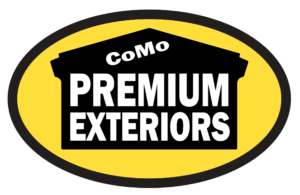Exploring Your Best Options: Choosing the Right Flat Roof Material for Longevity and Style
Are you looking to replace or install a flat roof for your commercial or residential property? Selecting the right flat roof material is crucial for both longevity and style. In this comprehensive guide, we’ll cover essential flat roofing materials like EPDM, TPO, and PVC, lifecycle and cost analysis, installation insights, advantages, maintenance, and how to select the right roofing professional for your project.
Key Takeaways
- Uncovering the fundamentals of flat roofs and essential materials for your project.
- Exploring longevity, cost analysis, energy efficiency and usability benefits of a flat roof surface.
- Debunking myths about durability & maintenance while outlining criteria for choosing an expert contractor.
Unveiling Flat Roof Fundamentals

A modern commercial building with a flat roof
Flat roofs are frequently found in commercial buildings and necessitate specific installation procedures. They consist of multiple layers, including a ceiling, joists, deck, vapor barrier, insulation, and roof board. There are 10 types of flat roofs available, including built-up roof, metal roof, and green roof. A commercial flat roof offers several benefits, such as cost-effectiveness, protection, and long-lasting performance, making them suitable for commercial and industrial buildings. They can also be used in residential properties to create rooftop gardens, providing an ideal space for plant-loving homeowners.
However, flat roofs also have some drawbacks, such as:
- Poor drainage, which can lead to water accumulation and pooling on the roof
- Potential for severe damage in the long run
- Risks in areas with intense rain or snowfall
Being aware of these challenges is important while selecting a flat roof system for your property.
Essential Flat Roofing Materials for Your Project
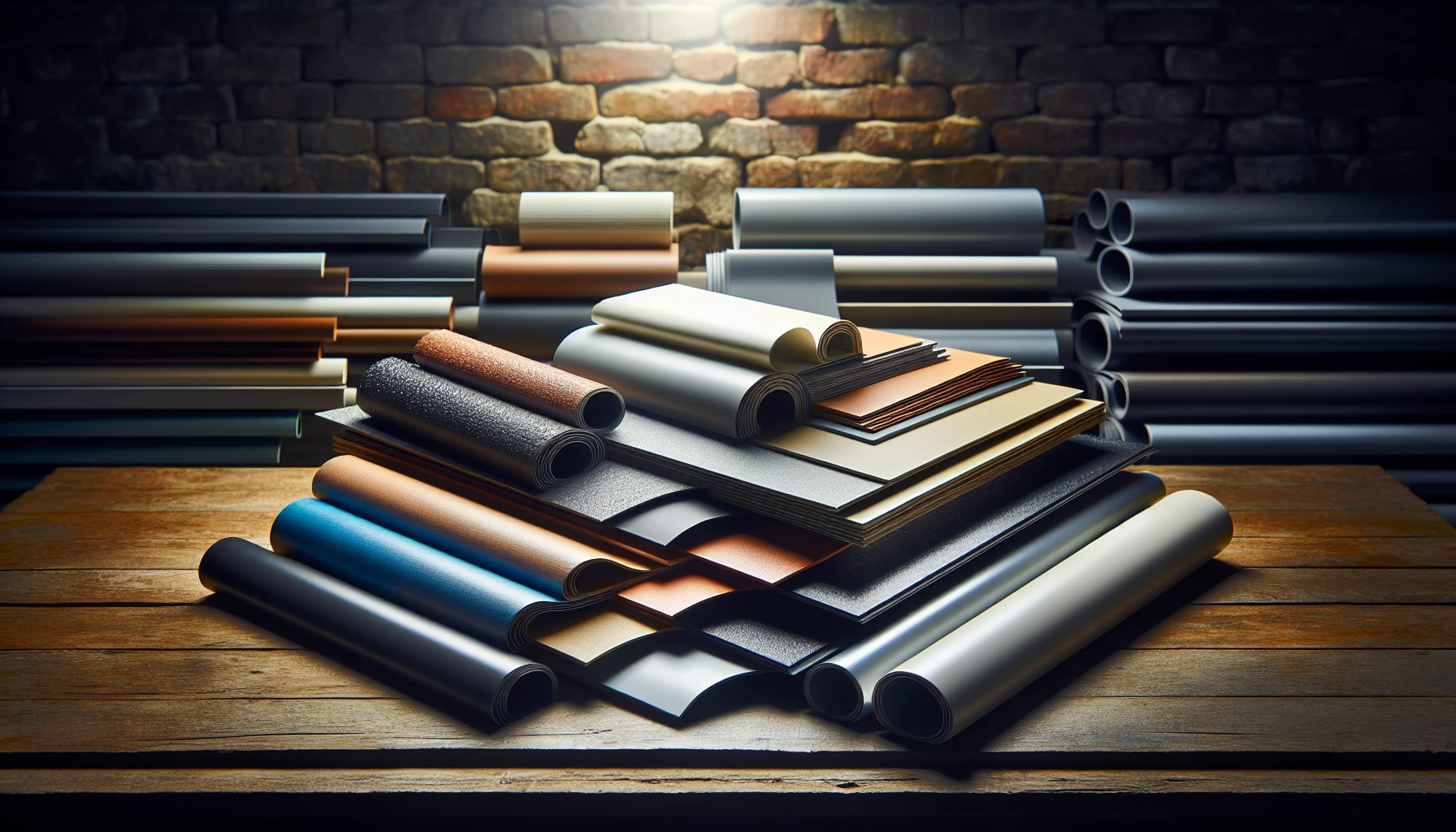
Various flat roofing materials including EPDM, TPO, and PVC
EPDM, TPO, and PVC are among the most common flat roof material used. These materials are specifically designed for flat roofs and offer unique characteristics that make them suitable for various applications. This section will cover the vital flat roofing materials, their unique characteristics and benefits.
Keep in mind that the suitability of flat roofing materials is contingent upon the roofing application. For instance, PVC or TPO is recommended for a flat roof on a living room or bedroom. Factors such as location, climate, and budget are important to consider when selecting a flat roofing material for your project.
EPDM: The Versatile Rubber Roofing Solution
EPDM roofing is a cost effective, long-lasting solution for covering low-slope roofs. It is made from industrial-grade synthetic rubber, typically ethylene propylene diene monomer (EPDM). It is known for its durability, flexibility, and resistance to UV rays, ozone, and extreme temperatures. EPDM has an estimated lifespan of 20-30 years, is relatively simple to maintain and repair, and is eco-friendly due to its use of recycled materials. White color has an important role in reflecting sunlight. This helps to reduce the amount of heat absorbed by the building, resulting in increased energy efficiency..
The price range for EPDM per square foot is between $5 to $13. Regular inspections, routine cleaning, and appropriate drainage are needed to maintain an EPDM surface. With proper installation and maintenance, an EPDM system can be expected to last for over 30 years.
TPO: The Reflective Energy Saver
TPO (thermoplastic polyolefin) is a single-ply membrane system composed of polypropylene and ethylene-propylene rubber. Notable for its energy efficiency and capacity to reflect UV rays, TPO roofing can help reduce energy bills. The installation cost of TPO roofing systems ranges from $3.50 to $14 per square foot, and it has an estimated lifespan of 15 to 30 years.
However, TPO roofing is not ideal for structures located in regions with heavy snowfall or freeze-thaw cycles. The climate and location of your property are important considerations when choosing a TPO roofing system.
PVC: The Fire-Resistant Choice
PVC (polyvinyl chloride) roofing is a resilient and pliable flat roofing material, similar to TPO, that features polyester reinforcements, hot air welded seams, and a range of color options. PVC roofing is known for its durability, chemical resistance, fire resistance, and temperature resistance. It is also easy to maintain and repair and comes in a range of colors, including white, which aids in reflecting sunlight and reducing cooling costs.
The anticipated lifespan of PVC roofing is up to 30 years when appropriate upkeep is observed, and the average cost per square foot for PVC flat roofing is typically between $4 and $12. Periodic cleaning and inspection of PVC roofing is necessary, similar to other single-ply membranes.
The Lifecycle and Cost Analysis of Flat Roof Options
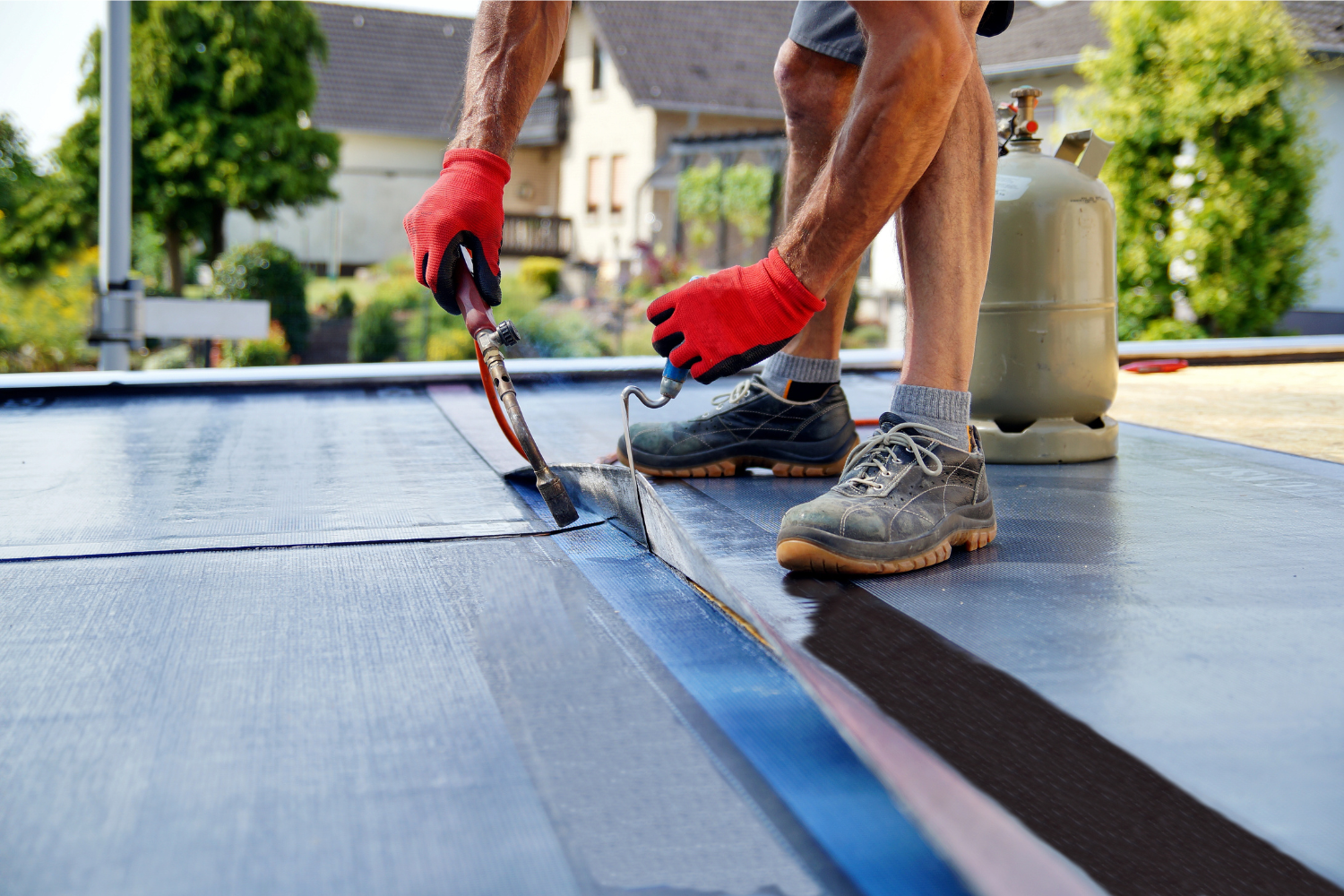
Comparison of lifecycle and cost analysis of flat roof options
Analyzing the lifecycle and costs of popular flat roofing materials will aid in making educated decisions for your project. This section will offer a comparison between the lifespan and costs of various flat roofing materials, including:
- EPDM
- TPO
- PVC
- Built-up roof
- Modified bitumen
- Green roof systems
Keep in mind that several factors must be taken into account when analyzing the lifecycle and cost of flat roof options. These factors include:
- Location
- Climate
- Budget
- Size of the roof
- Number of penetrations
- Roofing contractor
- Type of material used
Considering these factors will help you make the best decision for your flat roof project.
Longevity Matters: Expected Lifespan of Popular Flat Roofing Materials
The expected lifespan of various flat roofing materials can differ. Here are some examples:
- Metal flat roofing can endure up to 35 years in optimal conditions.
- Built-up roof constructions can last between 15 and 30 years.
- TPO membrane flat roofing can last up to 25 years with correct installation.
- Modified bitumen roofing systems, also known as modified bitumen roof, can last between 20 and 30 years.
Understanding the expected lifespan of these flat roofing materials can help you make an informed decision when selecting the right material for your flat roof project. Keep in mind that regular maintenance and proper installation are essential factors that can significantly impact the longevity of your flat roof.
Budgeting Your Roof: Costs Per Square Foot
When budgeting for a flat roof project, considering the cost per square foot of different flat roofing materials is important. Here are the average costs per square foot for various flat roofing materials:
- Built-up roof (BUR): $4 to $10
- Modified bitumen: $9.50 to $14.50
- EPDM roofing: $4.25 to $12
- TPO roofing: $3.50 to $14.00 (average national cost: $5.50 to $8.75)
- PVC flat roofing: $4 to $12
On average, the cost of flat roofing is around $8 per square foot.
Comparing these costs can help you make an informed decision when selecting a flat roofing material that fits your budget and meets your project requirements.
Installation Insights: Understanding the Flat Roof System Process
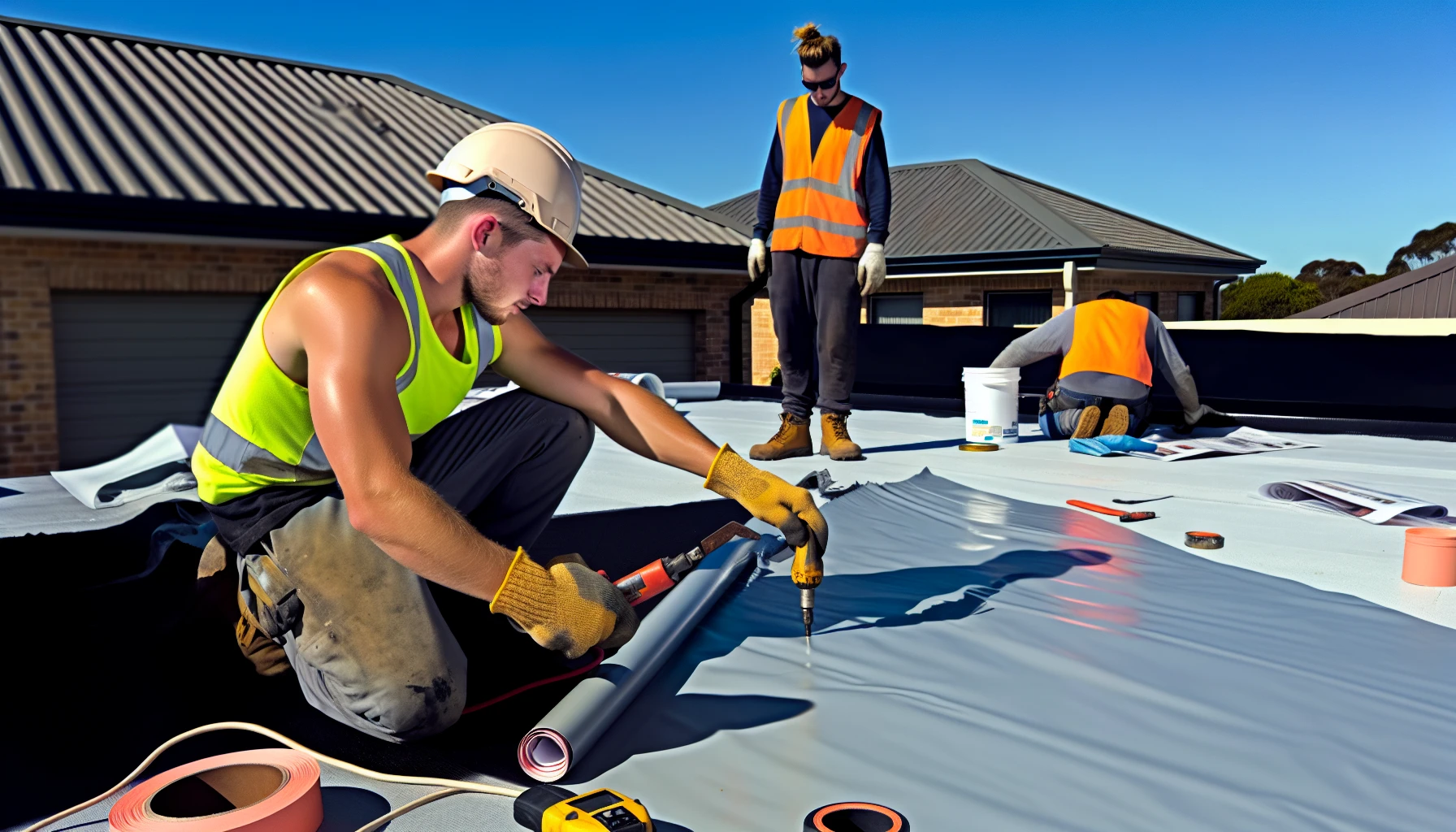
Flat roof installation process
Understanding the installation process of flat roof systems is key to ensuring the longevity and performance of your flat roof. This section will discuss the importance of proper installation and common installation techniques for popular flat roof materials like EPDM, TPO, and PVC.
The Importance of Proper Installation for Flat Roofs
Proper installation is needed for flat roofs to ensure durability and effectiveness. When installing flat roofs, it is imperative to take into account factors such as:
- Access to the roof
- Correct roof removal
- The building’s specific requirements
- The condition of the roof decking
- Insulation
- Product warranties
- Wind resistance
Incorrect installation of flat roofs can be detrimental to their performance and lifespan, potentially resulting in:
- Leaks
- Inadequate drainage
- Water damage
- Reduced durability of the roof
Hence, ensuring proper installation is important for the longevity of a flat roof.
Common Installation Techniques for Top Flat Roof Materials
For EPDM roofing, the customary installation process involves applying a bonded adhesive to roof and wall edges, sealing roof corners using pressure-sensitive flashing, and ensuring a watertight seal. This installation is generally carried out on timber decking surfaces.
The installation process for TPO roofing typically involves the following steps:
- Jobsite staging
- Material staging
- Rough roof tear-off
- Debris removal
- Roof deck repairs
- Deck preparation
- TPO membrane installation
- Seam welding
It is recommended to hire professionals for the installation process.
For PVC roofing, the installation methods involve proper ventilation, the application of adhesive, and the careful placement of the membrane with overlapping seams. Ensuring the proper installation of these flat roofing materials is crucial for their longevity and performance.
Advantages of Opting for a Flat Roof Surface
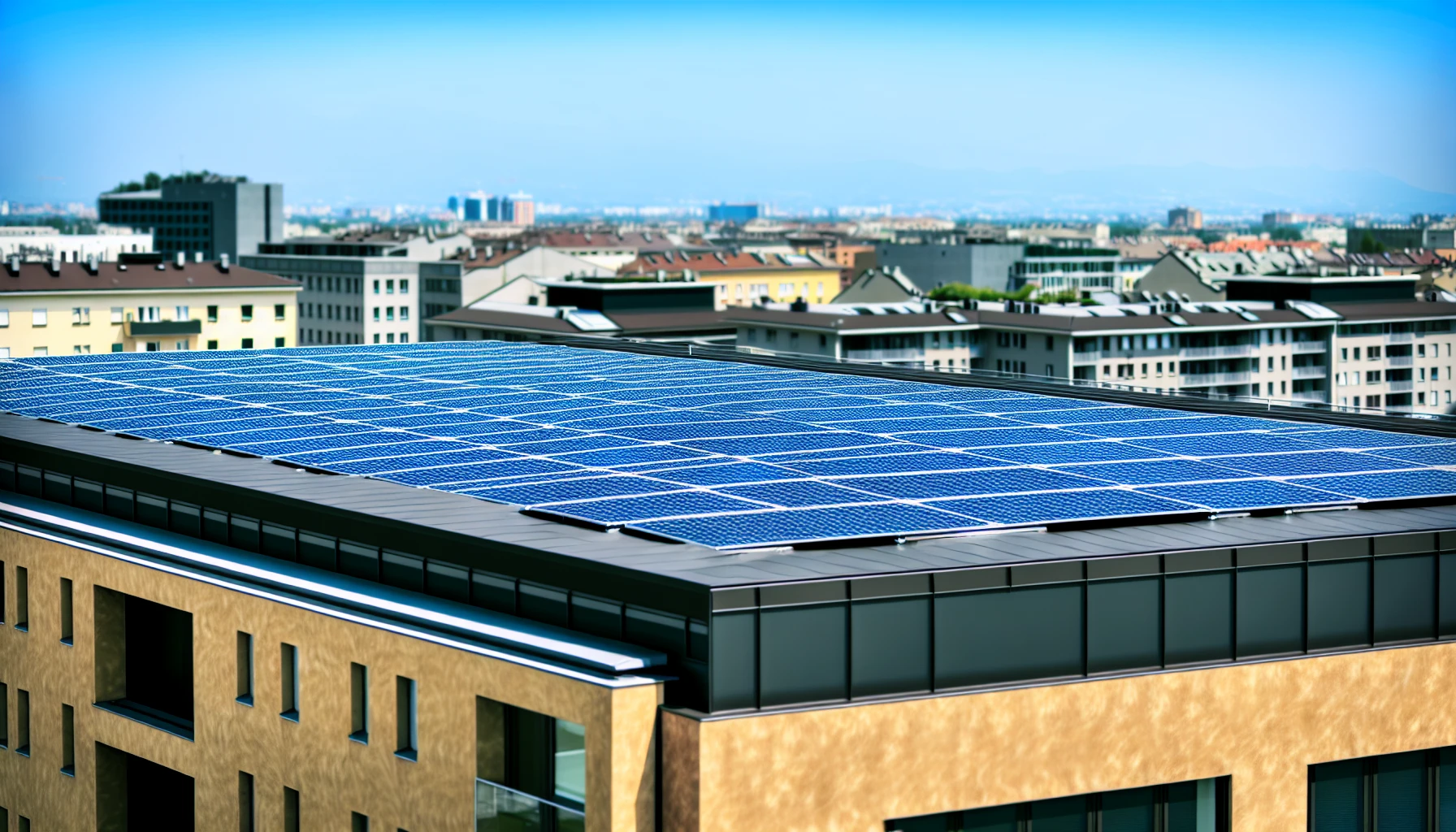
Solar panels on a flat roof for energy efficiency
Flat roofs bring several advantages such as energy efficiency, aesthetic appeal, and potential for additional usable space. This section will discuss how flat roofs contribute to energy efficiency and ways in which they can maximize space for various purposes.
Understanding the advantages of flat roofs can help you make an informed decision when considering whether a flat roof is the right choice for your property.
Energy Efficiency: How Flat Roofs Help Reduce Energy Bills
Flat roofs can contribute to energy efficiency through:
- Insulation
- Solar reflectivity
- Solar panel installation
- Green roof options
Reflective materials or coatings on flat roofs can block solar radiation from being absorbed, helping to keep the building cooler and reducing energy consumption. Studies have indicated that cool or reflective roofs can lead to energy savings of up to 15 percent or more in air conditioning costs.
The material of a flat roof can also have a significant effect on its energy efficiency. For instance, rigid insulation made of sheets or stiff material without gaps is more effective in terms of insulation. Proper insulation in metal flat roofs can also contribute to their energy efficiency. By selecting the appropriate material and insulation for a flat roof, you can reduce energy bills and improve overall energy efficiency.
Accessibility and Usability: Maximizing Space with Flat Roofs
Flat roofs provide more accessible and usable space compared to pitched roofs, as they are easier to inspect, repair, and install equipment on. If you have convenient access to the roof, you can convert the area into:
- An outdoor living space or lounge
- A rooftop garden
- Solar panel installations
- Additional rooms or functional areas, maximizing daylight with access hatch options.
By utilizing the additional space provided by a flat roof, you can improve the functionality of your building and increase its aesthetic appeal.
Addressing Common Misconceptions: The Truth About Flat Roof Maintenance
There are several misconceptions about the durability and maintenance requirements of flat roofs. This section will address these common misconceptions and provide accurate information about flat roof maintenance. By understanding the facts, you can make informed decisions about your flat roof project and ensure its longevity and performance.
With the right maintenance and material selection, flat roofs can provide long-lasting protection and style for your property.
Debunking Myths: The Reality of Flat Roof Durability
Some myths suggest that flat roofs are not as durable as pitched roofs, but this is not necessarily true. With the correct materials and construction processes, flat roofs can be designed to last up to 50 years or more. Flat roofs can absorb more heat than pitched roofs, particularly when they have black membranes. In cold climates, though, they may be more prone to problems such as ice buildup and snow accumulation.
Proper maintenance and material selection are essential factors that can significantly impact the longevity of your flat roof. Understanding the reality of flat roof durability can help you make an informed decision when selecting a flat roof for your property.
Maintenance Musts: Keeping Your Flat Roof in Top Shape
To keep your flat roof in top condition, the following steps are essential:
- Periodic inspections
- Clearing of drains
- Trimming of overhanging branches
- Assessment of roofing material
- Verification of flashing
The National Roofing Contractors Association (NRCA) recommends inspecting and maintaining a flat roof at least twice a year. More frequent inspections are advised, particularly if there are trees or other potential sources of damage nearby.
By adhering to proper maintenance protocols, you can ensure the longevity and performance of your flat roof. This will help prevent potential issues such as:
- Ponding
- Splitting
- Blistering
- Ridging
- Movement of the roof material
Selecting the Right Roofing Professional
Choosing the right roofing professional is key to the success of your flat roof project. This section will provide guidance on how to select the right roofing professional, including criteria to consider and questions to ask before hiring a contractor.
By selecting an experienced and qualified roofing professional, you can ensure the proper installation and maintenance of your flat roof, guaranteeing its longevity and performance.
Criteria for Choosing a Flat Roof Expert
When choosing a flat roof expert, it’s important to consider several criteria, such as experience, certifications, and communication. A roofing contractor must possess a state-verified certification or Residential Roofing License and, preferably, manufacturer certifications.
Additionally, it’s essential to inquire about the warranties they offer for a flat roof installation, including material and workmanship warranties. Taking these criteria into account can help you select the right roofing professional for your project.
Questions to Ask Before Hiring a Roofing Contractor
Before hiring a roofing contractor, it’s essential to ask several questions to ensure they are the right fit for your flat roof project. Inquire about their qualifications and certifications, the warranty they offer for a flat roof installation, and how to authenticate their credibility.
By asking the right questions, you can make an informed decision when selecting a roofing contractor and ensure a successful flat roof project.
Summary
In summary, choosing the right flat roof material is essential for the longevity and style of your commercial or residential property. Understanding the various flat roofing materials, their lifecycles, costs, installation processes, and benefits can help you make an informed decision. Proper installation and maintenance, along with selecting the right roofing professional, are crucial factors in ensuring the success of your flat roof project. With the right choices and care, a flat roof can provide lasting protection and style for years to come.
Frequently Asked Questions
What are the three types of flat roofs?
Flat roofs come in three primary varieties: built-up roofs, modified bitumen roofs, and single-ply membranes. Each of these roofing materials offers unique advantages and disadvantages, making them suitable for different roof structures.
What are the disadvantages of a flat roof?
Flat roofs require more maintenance and upkeep than pitched roofs due to their susceptibility to damage, drainage problems, and puddles of rainwater that can lead to leaks and material damage. Consequently, the cost of repairs and maintenance can be higher in the long run.
What is a flat top roof called?
A flat top roof is commonly called Built-up Roofing (BUR), which consists of multiple layers of asphalt and felt or fiberglass mats topped with a layer of gravel or reflective coating.
How long does a flat roof last?
On average, a flat roof should last around 20-25 years with proper installation and top-of-the-line materials. It is important to replace the roof if you start to reach this age threshold or notice any abnormalities.
What are the most common materials used for flat roofing?
The most common materials used for flat roofing are EPDM, TPO, and PVC.
